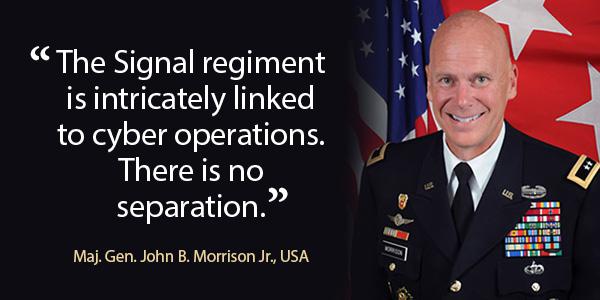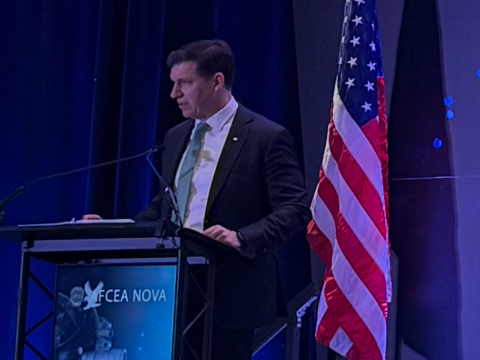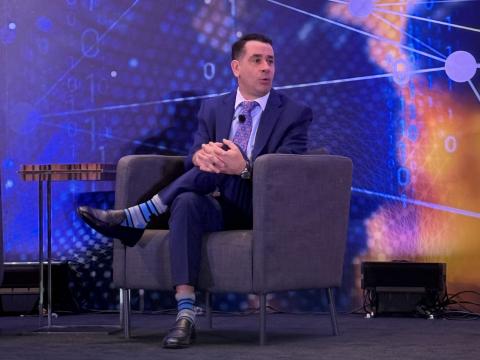U.S. Army Cyber Doctrine Making a Difference
The Army’s first doctrine for fighting in the cyberspace and electronic warfare domains already is changing the way the service operates, said Maj. Gen. John B. Morrison Jr., USA, commander, Cyber Center of Excellence and Fort Gordon, told the AFCEA TechNet Augusta audience in Augusta, Georgia.
MG Morrison, @ArmyCyberCoE, Army took the hardest road it could and stood up a #cyber branch with culture and turf wars that come w/it
— George Seffers (@gseffers) August 8, 2017
The doctrine, which also includes electronic warfare, codifies how the service is going to operate in cyberspace. It wraps in electronic warfare.
Gen. Morrison cited three major changes brought about by the doctrine. “First off, for the very first time it says that DODIN [Department of Defense Information Network] operations is the foundation for cyberspace operations. That intrinsically means that the Signal regiment is intricately linked to cyber operations. There is no separation,” Gen. Morrison asserted.
Furthermore, he added, it establishes the network end to end—strategic to tactical. “There is no differentiation between the two because in cyberspace it’s ubiquitous. It codifies how we’re going to organize ourselves from an offensive cyber perspective and then balances that with ... those defensive actions we take ... to prevent an attack. It brings those two together,” he said.
MG Morrison, @ArmyCyberCoE: #Cyber doctrine establishes the network end to end, ties together tactical and strategic networks#AFCEATechNet
— George Seffers (@gseffers) August 8, 2017
In addition, it combines all aspects of electronic warfare, including electronic protection, electronic attack and electronic support, into cyberspace operations. “It talks about how we will execute integrated operations that we are calling CEMA: cyber electromagnetic activities. It bounds all three of those core competencies—signal, cyber and electronic warfare—with the right intelligence underpinnings and brings them into an integrated staff and planning in support of the commander’s operational scheme of maneuver,” he offered.
MG Morrison, @ArmyCyberCoE, doctrine ties together signal, #cyber, #EW and the right intelligence underpinnings#AFCEATechNet
— George Seffers (@gseffers) August 8, 2017
Gen. Morrison stressed that the doctrine is “more than a staff planning construct,” and instead “it is an operational construct that goes from the battalion up to the theater army level.”
He also stated that the doctrine is affecting Army acquisition processes. Because the document codifies the network end to end, “That is how the Army is going to manage our money when it comes to the network, looking at it from a complete portfolio—enterprise, strategic and tactical—because it is all one network,” he said.
Gen. Morrison also discussed how over the past year, the U.S. Army has seen significant changes to the way it trains cyber, signal and electronic warfare. He addressed the conference on the same day the service was graduating its first class of enlisted personnel at the Cyber Center of Excellence. Just one year before, the general pointed out, it was only officers, mainly lieutenants, who were being trained for cyber. Now, the cyber school includes officers, warrant officers and enlisted personnel.
This afternoon, @ArmyCyberCoE graduates first class of enlisted #cyber personnel
— George Seffers (@gseffers) August 8, 2017
The service also is modifying its approach to training at the signal school, he indicated. “We’re fundamentally changing the way that we train inside the Signal School, making it much more multidisciplined and less specialized, and quite frankly, upping the game of the Signal Regiment so they are not only the operations and maintenance of the network but the security of it as well,” Gen. Morrison said. Foundational change is being implemented by [the leadership] of the Signal School.
He also cited the decision to move electronic warfare professionals into the cyber branch as a major shift. “While that’s effective in October of next year, that transition actually starts now, and we will start training our electronic warfare professionals in cyber operations planning starting in January,” he reported.
MG Morrison, @ArmyCyberCoE, We now have our first doctrine for fighting in #cyberspace. What a difference a year makes. #AFCEATechNet
— George Seffers (@gseffers) August 8, 2017
Several times while speaking about the Army’s approach to training in the cyber, signal and electronic warfare domains, Gen. Morrison repeated the refrain, “What a difference a year makes.”





Comments